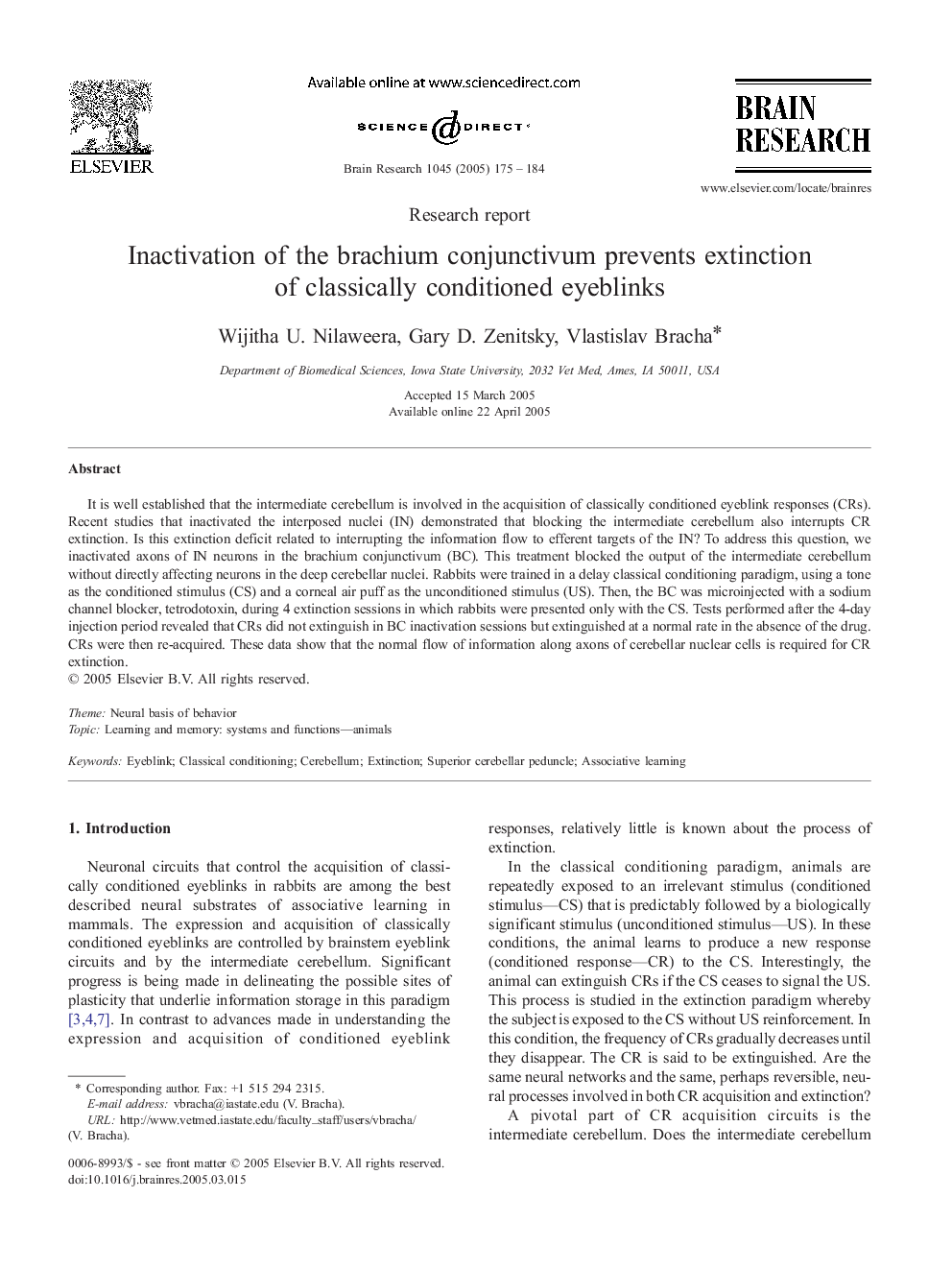| Article ID | Journal | Published Year | Pages | File Type |
|---|---|---|---|---|
| 9416297 | Brain Research | 2005 | 10 Pages |
Abstract
It is well established that the intermediate cerebellum is involved in the acquisition of classically conditioned eyeblink responses (CRs). Recent studies that inactivated the interposed nuclei (IN) demonstrated that blocking the intermediate cerebellum also interrupts CR extinction. Is this extinction deficit related to interrupting the information flow to efferent targets of the IN? To address this question, we inactivated axons of IN neurons in the brachium conjunctivum (BC). This treatment blocked the output of the intermediate cerebellum without directly affecting neurons in the deep cerebellar nuclei. Rabbits were trained in a delay classical conditioning paradigm, using a tone as the conditioned stimulus (CS) and a corneal air puff as the unconditioned stimulus (US). Then, the BC was microinjected with a sodium channel blocker, tetrodotoxin, during 4 extinction sessions in which rabbits were presented only with the CS. Tests performed after the 4-day injection period revealed that CRs did not extinguish in BC inactivation sessions but extinguished at a normal rate in the absence of the drug. CRs were then re-acquired. These data show that the normal flow of information along axons of cerebellar nuclear cells is required for CR extinction.
Keywords
Related Topics
Life Sciences
Neuroscience
Neuroscience (General)
Authors
Wijitha U. Nilaweera, Gary D. Zenitsky, Vlastislav Bracha,
